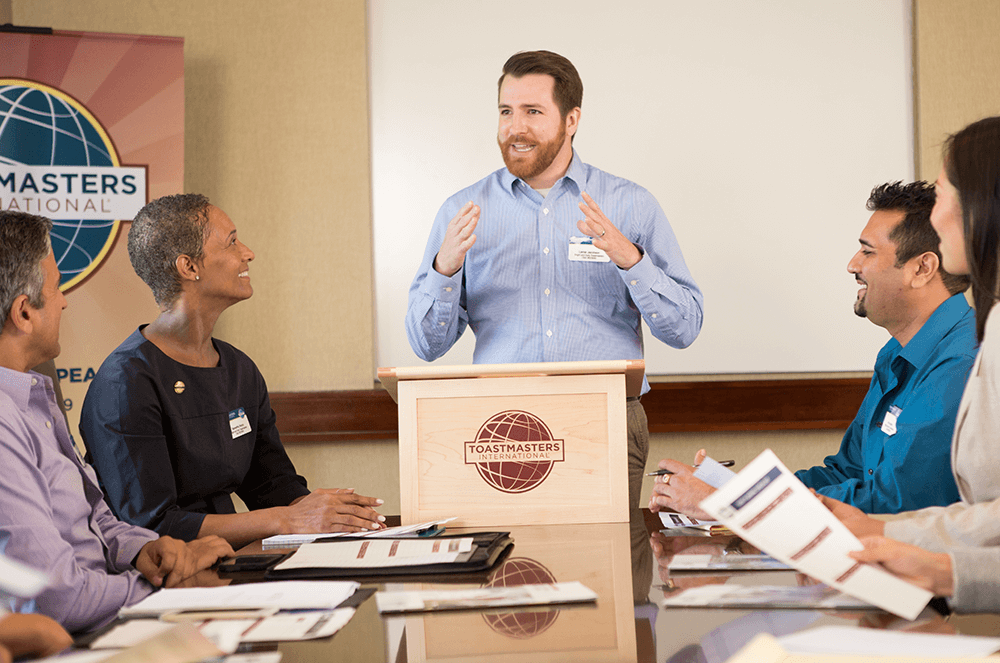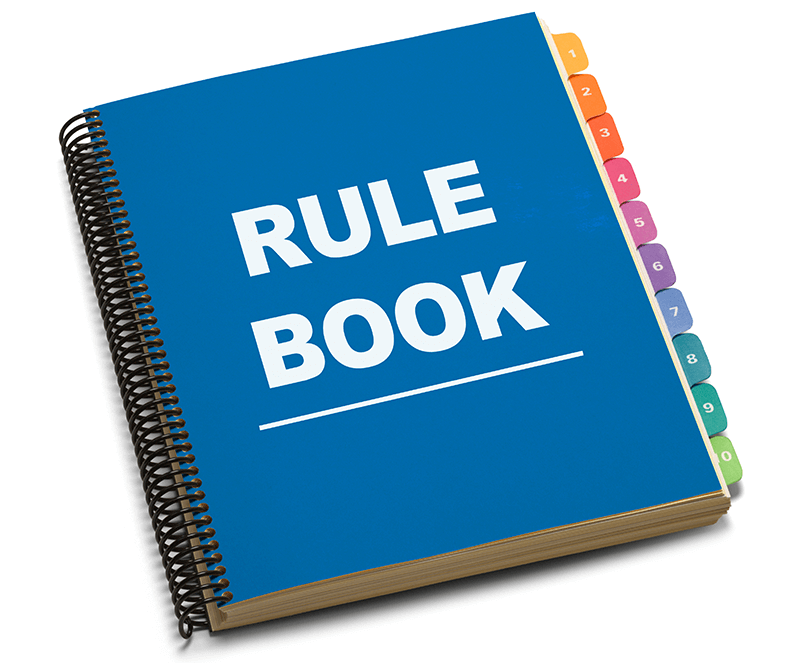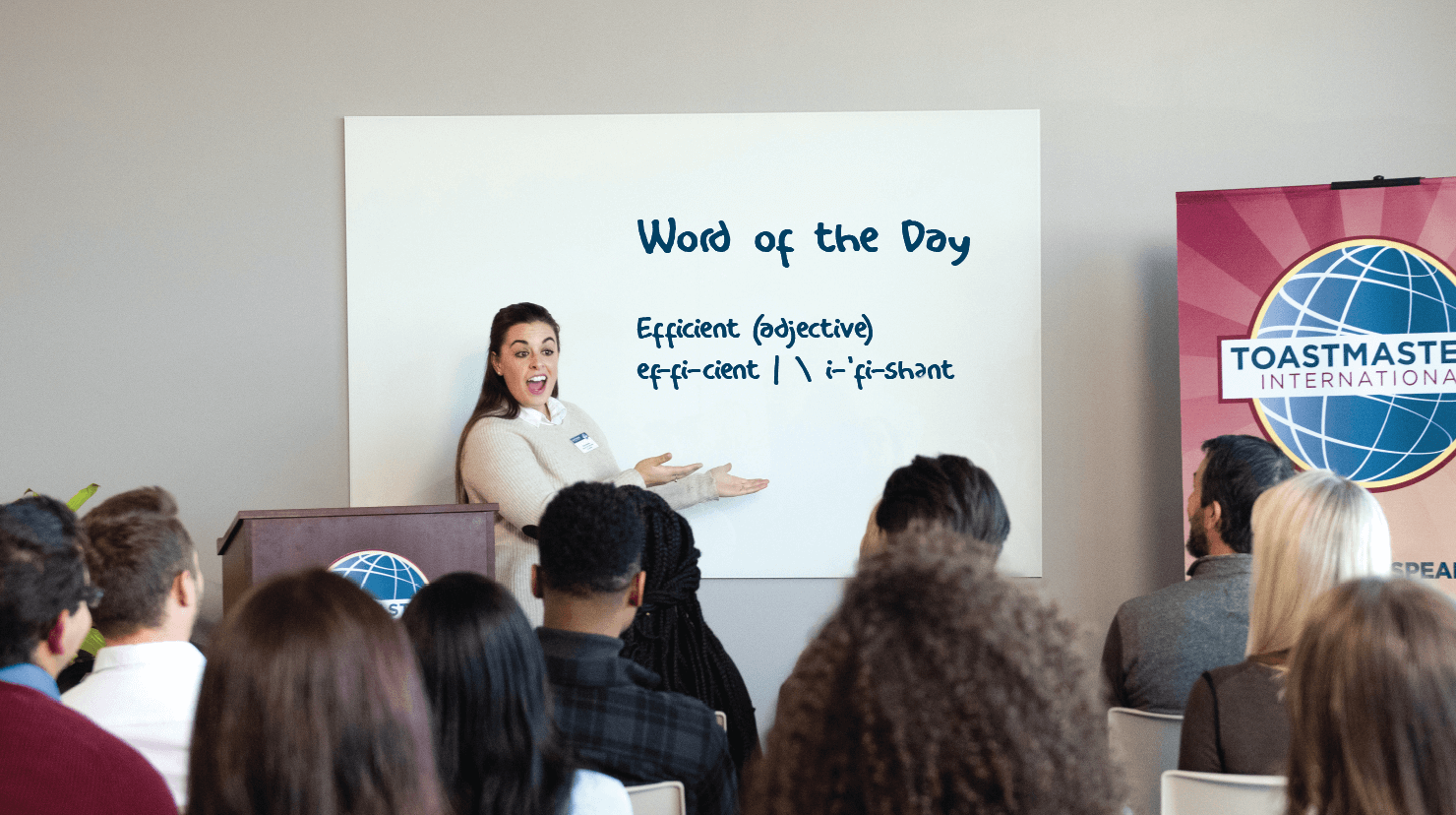Have any of these frustrating situations occurred in your club meetings? An issue is debated and discussed but never decided. Rules aren’t being followed, and nobody says anything about it. One member dominates a discussion, and other members aren’t heard. The discussion drags on and on and on …
Navigating group discussions and facilitating effective meetings can be an art. And one of the essential tools of this art is parliamentary procedure. Parliamentary procedure, particularly Robert’s Rules of Order, can keep meetings on track, shorten them, and create an atmosphere of fairness and equality.
However, some think parliamentary procedure is too formal, old-fashioned, and complicated. Others feel that the lack of knowledge is the problem. As Accredited Speaker and 1992 World Champion of Public Speaking Dana LaMon, DTM, said in a speech to the Virtual Parliamentarians Toastmasters club, “There are people who think that parliamentary law is what complicates meetings. They’re wrong. … It’s the lack of knowledge of parliamentary law and what it’s intended to accomplish that complicates meetings.”
The basic tenets of parliamentary procedure never go out of style and are still undeniably relevant today: majority rule and minority rights. The wishes of the majority are enacted, while the views of the minority are heard and respected.

Benefits for Clubs
A widely accepted standard for parliamentary procedure—though not the only form of it used—is Robert’s Rules of Order, based on the manual of the same name. A United States Army General named Henry Robert created the book, first publishing it in 1876. It has since been updated many times.
The main reason for using parliamentary procedure is to maintain structure and order, which can be valuable in Toastmasters meetings and other kinds as well. In club meetings, members use it during the business portion of the meeting, when club-related items are discussed. Under parliamentary rules, members can make a motion (a proposal to do something), such as take a vote on an issue or ask that the meeting be stopped for a recess, or adjourned. Someone could also raise a “point of information,” which is a request for more information on a specific question, or a “point of order,” a clarification that the rules are not being followed properly.
A “chair” oversees and guides parliamentary discussion. In the context of Toastmasters club meetings, the chair refers to the presiding officer, typically the Club President.
Past International Director Anthony Longley, DTM, is a longtime member of the First Bahamas Branch of Toastmasters club, in Nassau, Bahamas, which practices parliamentary procedure. He says seven fundamental principles of parliamentary law are key to the procedures.
- Ensure an equal count of all voting members’ votes.
- Protect the rights of the minority to be heard.
- Uphold the rights of all members to express their views through fair debate.
- Respect the rights of the majority to decide.
- Facilitate smooth business transactions in a spirit of cooperation and harmony.
- Establish a quorum for the group to conduct business. (A quorum is the minimum number of voting members who must be present to conduct business. For club officer elections, a quorum is a simple majority of club members.)
- Ensure that the chair remains impartial. If the chair intends to advocate for or against a motion, they should cede the chair to the next member in line of succession.
Using parliamentary procedure in club meetings helps the presiding officers and members conduct the session smoothly, fairly, and transparently. For example, if a member makes a motion that seems irrelevant, and no one seconds the motion, the group does not consider the motion. The purpose of seconding a motion is to show that at least two members want the motion considered. It doesn’t mean that the person who seconded the motion agrees with it, just that they see value in the group considering it.
A member might say, “I move that we change the location of the meeting from our current location to the public library.” If no one seconds the motion by saying, “I second the motion” or “Second,” the chair will usually ask, “Is there a second?” If no second is obtained within a few moments, then the group does not consider the motion (i.e., it “dies for lack of a second”).
In recent years at the Annual Business Meeting held at the Toastmasters International Convention, a Professional Registered Parliamentarian has advised the chair (the International President) on parliamentary procedures.
Benefits for Individual Members
Toastmasters is like a laboratory for communication and leadership training. It provides a platform for members to acquire transferable skills, such as practicing parliamentary procedure, to apply in the club and their careers. Longley, who served as host District co-chair for Toastmasters’ 2023 International Convention, points out that most business school graduates are not taught how to conduct a meeting effectively—a gap that Toastmasters aims to fill.
“A member who understands parliamentary procedure can proficiently structure an agenda, table and dispense of reports, and navigate other business elements with ease and order,” he says.
It might not be easy at first. “Learning parliamentary procedure is like learning a second language. It’s not intuitive,” says Margaret Hope, DTM, a Past International Director from Burnaby, British Columbia, Canada. “It feels backward to most people because they want to talk about something and then decide what to do, rather than make a tentative decision and then go to discussion.”
Knowing how to use parliamentary procedure is a skill that can help you get your voice heard. Years ago, as a new Toastmaster, Hope practiced parliamentary procedure in her club, the Advanced Speakers Club in Vancouver. She says she learned a lot from longtime fellow club member John Noonan, DTM, Toastmasters’ 1989–1990 International President and a Professional Registered Parliamentarian. She recalls Noonan saying, “Learn parliamentary procedure because it gives you power.”
Hope wielded that power in meetings when she was a teacher and her school district was forming a union. “I had to use Robert’s Rules to be heard when they didn’t want to hear me.”
You might even use parliamentary procedure if you are summoned to jury duty. Bob Palmer, DTM, a member of Prime Time Toastmasters in Riverside, California, was chosen as the jury foreman for a trial, during which he set the following rules for deliberations based on parliamentary procedure:
- Jurors will be given permission to speak by the chair (in this case, the jury foreman).
- Nobody can speak twice until everyone has had a chance to speak once.
- Address all comments to the chair, not to each other.
“They saw the fairness of it all and had buy-in for the whole 18 days,” says Palmer. “Peaceful, productive discussions ensued.”
Getting Started
When first learning parliamentary procedure, don’t be overwhelmed by all the rules—take it one step at a time. You can start by learning how to state a motion properly. For example, say, “I move that … ,” not “I want to make a motion …” So instead of saying to the chair, “I want to make a motion that we adjourn … ,” say, “I move that this meeting be adjourned to (state date, place, and time for next meeting).”
Clubs can get started by including the basics of parliamentary procedure in meetings and club elections. Districts can support learning by holding training sessions on parliamentary procedures.
Most democratic countries use parliamentary procedures, though not all use the same system of rules. People in the United States, for example, mostly rely on Robert’s Rules of Order, while Canadians draw on Bourinot’s Rules of Order, and Australians use the Guide for Meetings and Organisations, by N.E. Renton.
The most commonly used guide is Robert’s Rules of Order In Brief, a concise guide with handy tables at the back of the book that tell you how to state things. You can also purchase a pack of 10 “Chart of Motions” from the Toastmasters Online Store.
Toastmasters founder Ralph Smedley was a staunch supporter of Robert’s Rules, even authoring two books about General Robert, including The Great Peacemaker (available from the online store). Smedley saw Robert’s Rules as a tool to foster clear, democratic communication, a sentiment still valuable to Toastmasters clubs worldwide.
Parliamentary procedure, such as Robert’s Rules of Order, is instrumental in promoting fair decision-making and encouraging each member’s active participation. As you participate in future Toastmasters meetings, remember that this structured process is not a mere tradition, but a testament to the core values we uphold as members of Toastmasters International: integrity, respect, service, and excellence.
Diane Windingland, DTM is a presentation coach from Spring, Texas, and a member of three clubs: Frankly Speaking Toastmasters in Spring, Texas, and PowerTalk Toastmasters and Readership Toastmasters, both in Minnesota. Learn more at virtualspeechcoach.com.
Related Articles

Club Experience
6 Tips for Successful Club Meetings

Club Experience
Building Your Club Policies

Club Experience



 Previous
Previous

 Specialty Clubs Study Robert’s Rules of Order
Specialty Clubs Study Robert’s Rules of Order
 Previous Article
Previous Article
